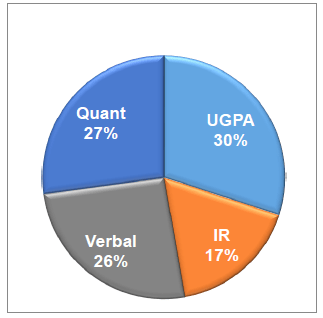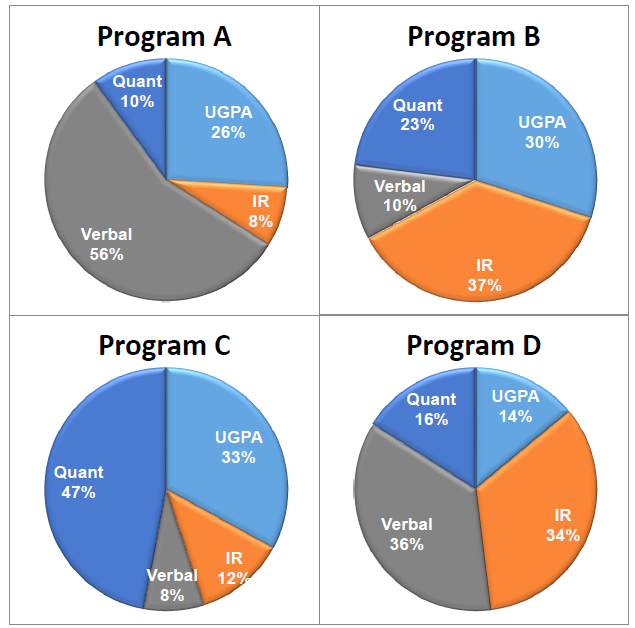IR scores provide unique information to help predict success in business school.
Research shows IR can predict success in business school.
- IR adds something not measured by GMAT Q, V, A or undergraduate GPA.
- Results differ by program—each school should conduct a validity study.
Even though the Integrated Reasoning section is more than two years old, many schools continue to look for data
and information that will allow them to pinpoint the value of the scores for their programs. Recently, more than a
dozen schools have conducted validity studies to see not only how well the IR scores predict on their own, but also
how much unique information they provide over what is already known about each candidate. The research has
shown that IR scores provide useful additional information, but, like each of the admission factors, the importance
of the scores will differ based on the characteristics of each unique program and its applicants.
Data from thousands of students were collected to assess predictive validity of each of the GMAT scores along with
undergraduate grade point average. Information was standardized within each program so that data could be
combined, while still accounting for the differences across the schools and the programs within them. Predictive
validity is measured as a correlation, with values from 0 to 1. Figure 1 shows the comparison among different
admission factors. The results show that the relationship of graduate grades with IR scores is similar to the
relationship with UGPA, Verbal, and Quantitative scores.
Figure 1

Admissions evaluate the combination of factors when considering a candidate, as opposed to just one factor.
Therefore, the predictive validity of the factors should be assessed when used in combination. Adding IR scores
improves the prediction, regardless of the combination of predictors used. Figure 2 shows the relative weight of
each factor in the combination, which indicates the unique contribution made by the individual scores. From the
combined dataset, results showed that a significant piece of the prediction pie was allocated to the unique
information from IR scores. Considering that IR is a shorter section compared to the UGPA, Verbal, and Quantitative
measures, these findings show quite a bit of value can be gleaned from this addition.
Figure 2

The analyses presented in Figure 2 are based on a combination of programs. Reporting averages or results based on
combined data does not show the myriad differences that could be observed for an individual, a program, or a
school. In Figure 3, samples of actual program level results show that the importance of each of the scores can vary
widely.
Figure 3

Schools interested in how to use IR scores most effectively with their other admission information can conduct their
own validity study through free resources at GMAC. For more information on conducting a validity study, contact vss@gmac.com or 1-703-668-9788.